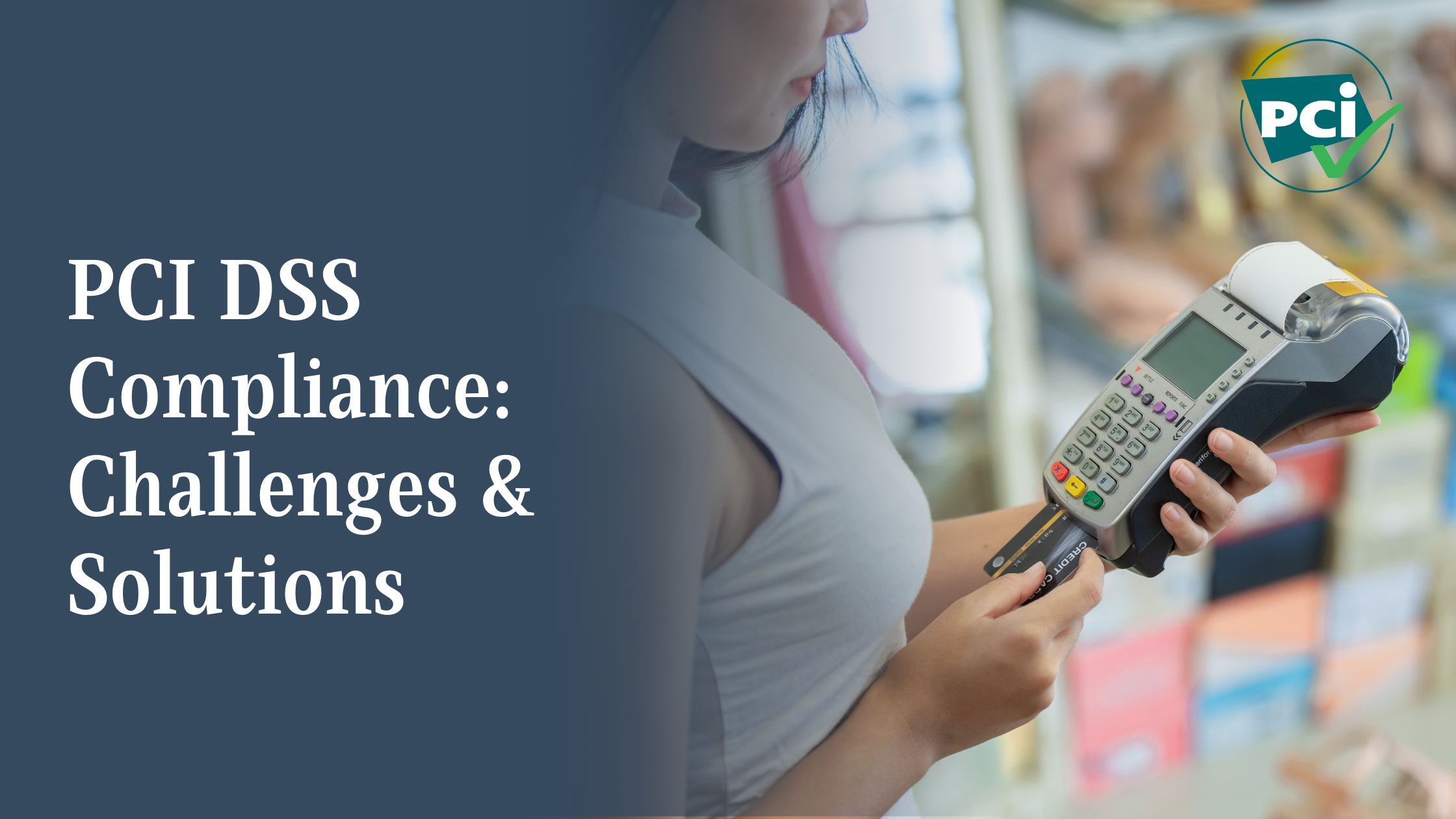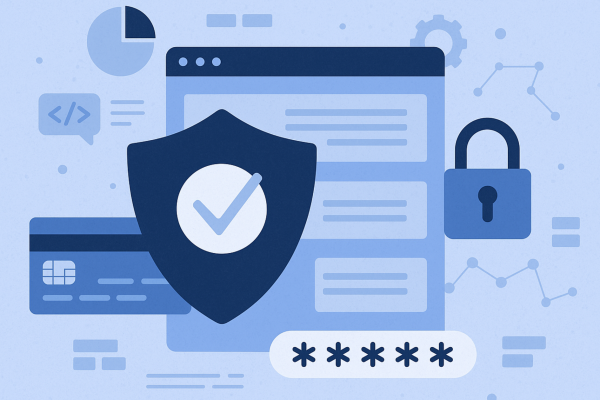PCI DSS Compliance: Challenges and Solutions
Introduction
In today’s digital age, safeguarding sensitive information is paramount for businesses, especially those handling payment card data. Ensuring this data is protected is not just a good practice but a legal requirement under the Payment Card Industry Data Security Standard (PCI DSS). Achieving and maintaining PCI DSS compliance can be a daunting task for many organizations. This blog will delve into the challenges and solutions associated with PCI DSS compliance, providing a comprehensive guide for businesses aiming to secure their operations.
Understanding PCI DSS Compliance
Cybersecurity solutions encompass a range of technologies, processes, and practices designed to protect networks, devices, programs, and data from attack, damage, or unauthorized access. These solutions are critical in ensuring the confidentiality, integrity, and availability of information.
The Core Requirements of PCI DSS
The PCI DSS comprises twelve key requirements organized into six categories:
- Build and Maintain a Secure Network and Systems
- Install and maintain a firewall configuration to protect cardholder data.
- Do not use vendor-supplied defaults for system passwords and other security parameters.
- Protect Cardholder Data
- Protect stored cardholder data.
- Encrypt transmission of cardholder data across open, public networks.
- Maintain a Vulnerability Management Program
- Protect all systems against malware and regularly update anti-virus software or programs.
- Develop and maintain secure systems and applications.
- Implement Strong Access Control Measures
- Restrict access to cardholder data by business need to know.
- Identify and authenticate access to system components.
- Restrict physical access to cardholder data.
- Regularly Monitor and Test Networks
- Track and monitor all access to network resources and cardholder data.
- Regularly test security systems and processes.
- Maintain an Information Security Policy
- Maintain a policy that addresses information security for all personnel.
Challenges in Achieving PCI DSS Compliance
While the requirements may seem straightforward, achieving PCI DSS compliance involves several challenges:
1. Complexity of Requirements
The twelve requirements of PCI DSS are detailed and can be difficult to interpret. Businesses often struggle to understand what specific measures they need to implement to comply fully.
2. Resource Intensity
Achieving and maintaining compliance requires significant resources. This includes not only financial resources but also time and effort from skilled personnel. Smaller businesses may find it particularly challenging to allocate sufficient resources.
3. Changing Security Landscape
The cybersecurity landscape is constantly evolving. New threats and vulnerabilities emerge regularly, necessitating continuous updates and adjustments to security measures to maintain compliance.
4. Technological Integration
Integrating PCI DSS requirements with existing technologies can be complex. Legacy systems, in particular, may not support modern security protocols, requiring extensive updates or replacements
5. Human Factors
Employees are often the weakest link in security. Ensuring that all personnel are adequately trained and adhere to security policies is a significant challenge.
6. Regular Audits
PCI DSS compliance requires regular audits, which can be disruptive and stressful for businesses. Preparing for audits involves meticulous documentation and evidence gathering, which can be time-consuming.
Solutions for PCI DSS Compliance
Despite these challenges, there are effective strategies and solutions to achieve and maintain PCI DSS compliance:
1. Engage PCI DSS Compliance Services
Professional PCI DSS Compliance Services can be invaluable. These services provide expertise in navigating the complexities of the PCI DSS requirements, ensuring that businesses implement the necessary measures correctly and efficiently.
2. Comprehensive Training Programs
Investing in comprehensive training programs for employees can mitigate the risk of human error. Training should cover the importance of PCI DSS compliance, the specific security protocols in place, and the role each employee plays in maintaining security.
3. Regular Security Assessments
Conducting regular security assessments helps identify vulnerabilities before they can be exploited. These assessments should include both internal reviews and third-party audits to provide an objective evaluation of security measures.
4. Implement Advanced Security Technologies
Utilizing advanced security technologies can streamline the process of achieving PCI DSS compliance. Solutions such as encryption, tokenization, and advanced firewalls can enhance data protection and simplify compliance efforts.
5. Develop a Compliance Roadmap
Creating a compliance roadmap can provide a clear path to achieving PCI DSS compliance. This roadmap should outline the specific steps and milestones, assigning responsibilities and timelines to ensure progress.
6. Continuous Monitoring and Improvement
PCI DSS compliance is not a one-time task but an ongoing process. Continuous monitoring of systems and processes, along with regular updates and improvements, is essential to maintain compliance in the face of evolving threats.
7. Leverage Automation
Automation can significantly reduce the burden of compliance. Tools that automate monitoring, reporting, and evidence gathering can streamline compliance efforts and reduce the risk of human error.
Case Studies of Successful PCI DSS Compliance
A small retail business struggling with PCI DSS compliance engaged a PCI DSS Compliance Service to help navigate the complexities. The service conducted a thorough assessment, provided training for employees, and helped implement advanced security technologies. As a result, the business achieved compliance within six months and significantly improved its overall security posture.
Case Studies of Successful PCI DSS Compliance
A large e-commerce platform faced challenges integrating PCI DSS requirements with its legacy systems. By developing a compliance roadmap and leveraging automation tools, the platform streamlined its compliance efforts. Continuous monitoring and regular security assessments helped maintain compliance and adapt to emerging threats.
The Role of PCI DSS Compliance Services
Engaging PCI DSS Compliance Services can make a significant difference in achieving and maintaining compliance. These services provide:
- Expert Guidance: Navigating the complexities of PCI DSS requirements.
- Training and Education: Ensuring all employees understand and adhere to security protocols.
- Technology Solutions: Implementing advanced security technologies to protect cardholder data.
- Continuous Support: Ongoing support to maintain compliance and adapt to new security threats.
Conclusion
Achieving and maintaining PCI DSS compliance is a critical task for any business handling payment card data. While the process can be challenging, engaging professional PCI DSS Compliance Services, investing in training, leveraging advanced technologies, and implementing continuous monitoring can help businesses overcome these challenges. By prioritizing PCI DSS compliance, businesses not only meet legal requirements but also enhance their overall security, protecting themselves and their customers from the ever-evolving threat landscape.
Author






